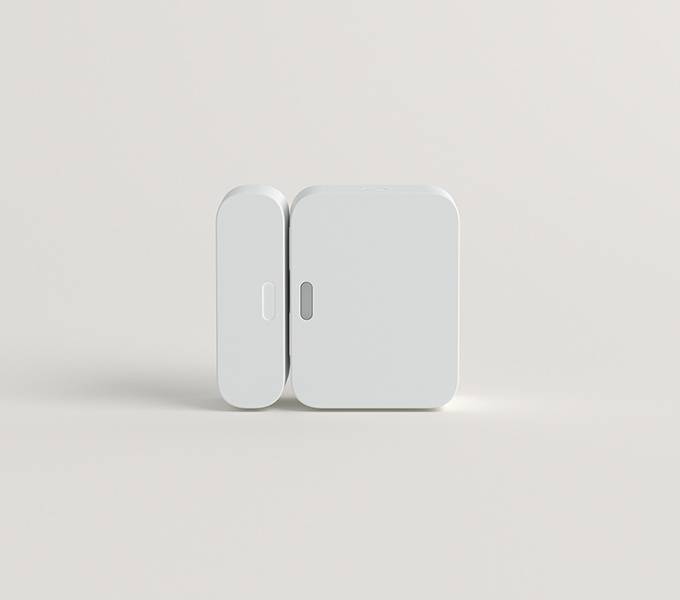Hey everyone, Josh Patrick here. When it comes to home security, entry sensors are one of the most effective ways to keep tabs on your doors and windows. They alert you whenever someone opens or closes them, providing an extra layer of security and peace of mind. SimpliSafe is a popular choice for DIY security systems, and their entry sensors are known for being reliable and easy to install. If you’re considering installing SimpliSafe entry sensors, you’re in the right place.
How to install Simplisafe Entry Sensor?
Let me walk you through the step-by-step process, share some tips, and address common questions about these essential security devices.
Why Choose SimpliSafe Entry Sensors?
Before diving into the installation, let’s talk about why SimpliSafe entry sensors are a good choice. These sensors are designed to be user-friendly, with a simple adhesive backing for installation—no drilling or complicated wiring required. They work seamlessly with the SimpliSafe security system, allowing you to monitor doors and windows from your smartphone or computer. The sensors are wireless and battery-operated, offering flexibility in placement without the need for additional power sources.

Unboxing and Preparation
When you unbox your SimpliSafe entry sensors, you’ll find a few key components:
- The sensor unit
- The magnet unit
- Adhesive strips for mounting
- Installation instructions
Before installing, make sure your SimpliSafe Base Station is set up and functioning. The Base Station is the hub of the SimpliSafe system, connecting all your sensors to the SimpliSafe app and allowing you to receive alerts.
Choosing the Right Locations
The first step in installing SimpliSafe entry sensors is deciding where to place them. Generally, you’ll want to install sensors on all exterior doors and windows. This ensures you’re alerted to any unauthorized entry. Consider the following when choosing locations:
- Door sensors: Place them on the main entry doors, garage doors, and any other exterior doors.
- Window sensors: Focus on ground-level windows or windows that could be accessed from a balcony or fire escape.
Once you know where to install the sensors, you’re ready to get started.
Installing the Sensors
SimpliSafe entry sensors are designed to be easy to install, so you don’t need any special tools. Here’s the step-by-step process for installing a sensor on a door:
- Clean the Surface: Before attaching the sensor, clean the area where you’ll be placing it. Use a damp cloth to remove dirt, dust, or grease. This ensures a secure bond with the adhesive strips.
- Position the Sensor and Magnet: The sensor and magnet should be placed next to each other, with a small gap between them. The sensor is the larger unit, while the magnet is the smaller one. For doors, place the sensor on the door frame and the magnet on the door itself, ensuring they align when the door is closed.
- Attach the Sensor and Magnet: Peel off the backing from the adhesive strips and attach the sensor and magnet to the desired locations. Make sure they are aligned and the sensor’s arrow points toward the magnet. Apply firm pressure to ensure a strong bond.
- Test the Sensor: Once installed, test the sensor by opening and closing the door. If everything is working correctly, the Base Station should emit a chime or alert, indicating that the sensor has detected the door’s movement.
The process for installing sensors on windows is similar, with the sensor placed on the window frame and the magnet on the window itself. The key is to ensure they align properly and the adhesive strips have a secure grip.
Troubleshooting Common Issues
Sometimes, things don’t go as smoothly as planned. Here are some common issues you might encounter when installing SimpliSafe entry sensors and how to address them:
- Sensor Misalignment: If the sensor and magnet aren’t properly aligned, the sensor might not detect the door or window’s movement. To fix this, adjust the sensor’s position or add a spacer to ensure proper alignment.
- Weak Adhesive: If the adhesive doesn’t stick well, it could be due to a dirty or uneven surface. Try cleaning the surface again and reapplying the adhesive. If the problem persists, consider using additional adhesive strips or screws for a more permanent solution.
- Sensor Not Connecting to Base Station: If the sensor doesn’t connect to the Base Station, ensure it’s within range. You may need to move the Base Station closer to the sensor or use a SimpliSafe extender for better connectivity.
- False Alarms: If you’re experiencing false alarms, check the sensor’s alignment and sensitivity settings in the SimpliSafe app. Make sure the sensor isn’t triggered by vibrations or other environmental factors.
Customizing Sensor Settings in the SimpliSafe App
The SimpliSafe app allows you to customize the behavior of your entry sensors. You can set notifications, arm and disarm sensors, and adjust sensitivity. Here’s how I customized my sensor settings:
- Notifications: I set up push notifications to my smartphone whenever an entry sensor was triggered. This way, I could monitor my home even when I wasn’t there.
- Arming and Disarming: SimpliSafe allows you to arm and disarm your system remotely. I used this feature to control when the sensors were active, ensuring they were armed when I was away and disarmed when I was home.
- Sensitivity Settings: If your sensors are too sensitive, you might get false alarms. I adjusted the sensitivity to a level that reduced false alarms without compromising security.
Final Thoughts
Installing SimpliSafe entry sensors was a rewarding experience. It was relatively straightforward, and the flexibility of wireless, battery-operated sensors made it easy to customize my security system. Whether you’re looking to monitor doors, windows, or other entry points, SimpliSafe entry sensors are a great addition to any home security setup.
If you’re considering installing SimpliSafe entry sensors, I recommend taking your time to choose the right locations and ensure proper alignment. With a bit of patience and the right preparation, you’ll be on your way to a safer and more secure home.
That’s it from me for now. If you have any questions about SimpliSafe or other smart home projects, feel free to reach out. I’m always here to help. Until next time, happy smart home building!
How Do SimpliSafe Entry Sensors Work?
SimpliSafe entry sensors consist of two parts: the sensor and the magnet. The sensor is placed on a stationary surface, like a door frame or window frame, while the magnet is placed on a moving surface, like a door or window. When the door or window is closed, the sensor and magnet are in close proximity.
When the door or window is opened, the sensor detects the separation from the magnet and sends a signal to the SimpliSafe Base Station, triggering an alert. These alerts can be customized through the SimpliSafe app to notify you via push notifications, text messages, or emails.
How Long Do SimpliSafe Entry Sensor Batteries Last?
SimpliSafe entry sensors use lithium CR-2032 batteries, which are known for their long-lasting power. Under normal usage, these batteries can last up to 3-5 years. However, battery life can vary based on factors such as the frequency of sensor activity, environmental conditions, and sensor settings.
To maximize battery life, consider reducing unnecessary sensor activity by adjusting sensitivity settings and motion zones. The SimpliSafe app provides battery status updates, allowing you to monitor when it’s time to replace the batteries. If you notice reduced performance or connectivity issues, it’s a good idea to check and replace the batteries as needed.
Can I Install SimpliSafe Entry Sensors on Metal Doors or Frames?
Yes, you can install SimpliSafe entry sensors on metal doors or frames, but there are a few considerations to keep in mind. Metal surfaces can sometimes interfere with wireless signals, potentially affecting the sensor’s communication with the Base Station.
To minimize this risk, ensure the sensor has a clear line of sight to the Base Station and is within its range. If you’re installing on metal, use the provided adhesive strips and ensure the surface is clean and dry. If you encounter connectivity issues, try repositioning the Base Station or using a SimpliSafe extender to boost the signal.
What Should I Do If My SimpliSafe Entry Sensor Is Not Working?
If your SimpliSafe entry sensor isn’t working, there are several steps you can take to troubleshoot the issue. First, ensure the sensor and magnet are properly aligned and the gap between them is not too wide. If the sensor’s battery is low, replace it with a new one.
Check the SimpliSafe app for any error messages or notifications indicating connectivity issues. If the sensor is still not working, try resetting it by removing the battery, waiting a few seconds, and reinstalling it. If these steps don’t resolve the problem, consider contacting SimpliSafe customer support for further assistance.
Can I Use SimpliSafe Entry Sensors on Sliding Doors or Windows?
Yes, SimpliSafe entry sensors can be used on sliding doors and windows. The key is to ensure proper alignment between the sensor and magnet when the door or window is closed. For sliding doors, you can place the sensor on the stationary frame and the magnet on the sliding part of the door. For sliding windows, the sensor goes on the window frame, and the magnet goes on the sliding sash.
Make sure the sensor and magnet are close enough when the door or window is closed to ensure accurate detection. If you encounter alignment issues, consider using additional adhesive strips or spacers to achieve the correct placement.
Disclaimer: This information is for general purposes only. Consult a professional for specific advice. See our terms and conditions for details.

